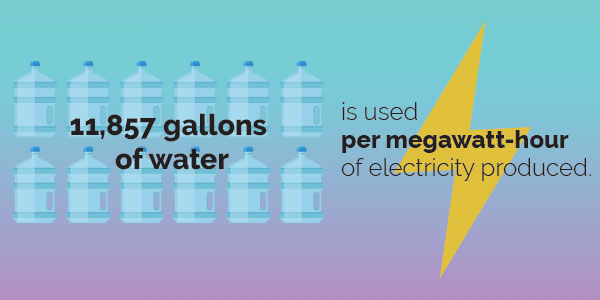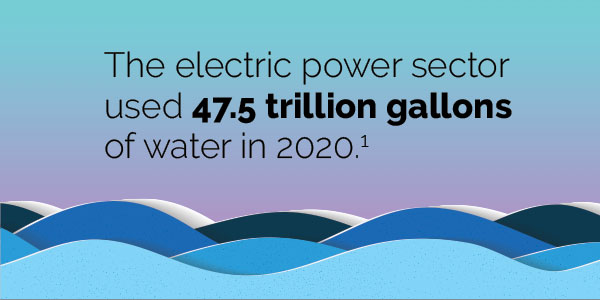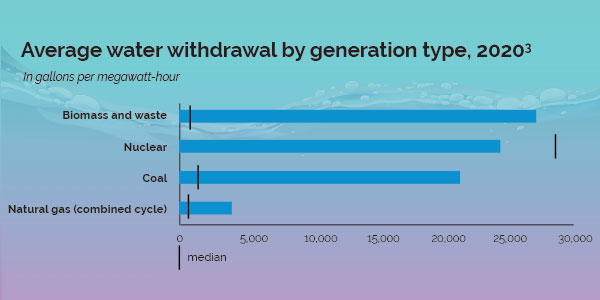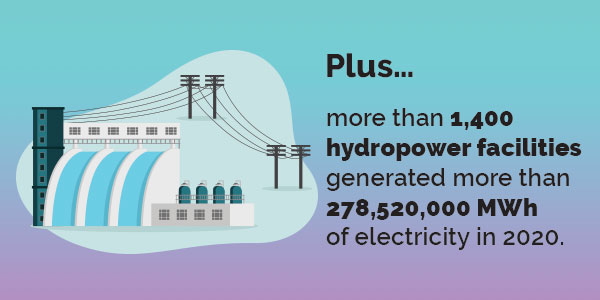Making electricity requires a lot of water.
In the U.S. in 2020, an average of 11,857 gallons of water was used per megawatt-hour of electricity produced.

Collectively, the electric power sector used 47.5 trillion gallons of water in 2020.

This makes power plants the largest source of water withdrawals, though most of this water is returned to its source after helping to cool down thermal generating facilities, such as those using natural gas, coal, or nuclear fuel.
About 84% of the withdrawals occurred in the eastern half of the U.S. in 2015.
Average water withdrawal by generation type, 2020

Plus … more than 1,400 hydropower facilities generated more than 278,520,000 MWh of electricity in 2020.

Using less
Since 2015, total water use by the sector has declined more than 10%, and the water use intensity has declined more than 20%. This can be attributed to the changing generating mix and to the deployment of technologies and systems that reduce the need for water at thermal plants.
Certain types of natural gas-fired facilities already have low water use by relying on dry cooling systems — essentially fans — instead of water. Some next generation advanced nuclear systems, such as a small modular reactor project in Idaho with Utah Associated Municipal Power Systems and NuScale, are exploring deploying dry cooling, which could reduce water usage by 90%.

